Ecological achievements in Inner Mongolia Autonomous Region
As a Chinese ballad goes, "under boundless sky, on vast prairies, herds of cows and sheep emerge when the wind blows and grass lowers," it is descriptive of the landscape in Inner Mongolia Autonomous Region.
However, at the end of the last century, over-grazing, expanding farms and population pressure, coupled with drought and other natural disasters, led to the desertification of many parts of Inner Mongolia.
The ecological conditions of the region make a big difference not only to the people here, but to the ecological security of north China and the entire country.
To build Inner Mongolia as a shield of ecological security for north China, two methods for ecological protection have been applied since 2014 -- firstly major ecological restoration projects, such as the sandstorm source control program and return of marginal farmland to forest and grazing land to grassland; and secondly the speeding up of institution building concerning ecological protection.
Since then, Inner Mongolia's ecological protection has been on a fast track, with more efforts in desert control, grassland protection and water and soil preservation.
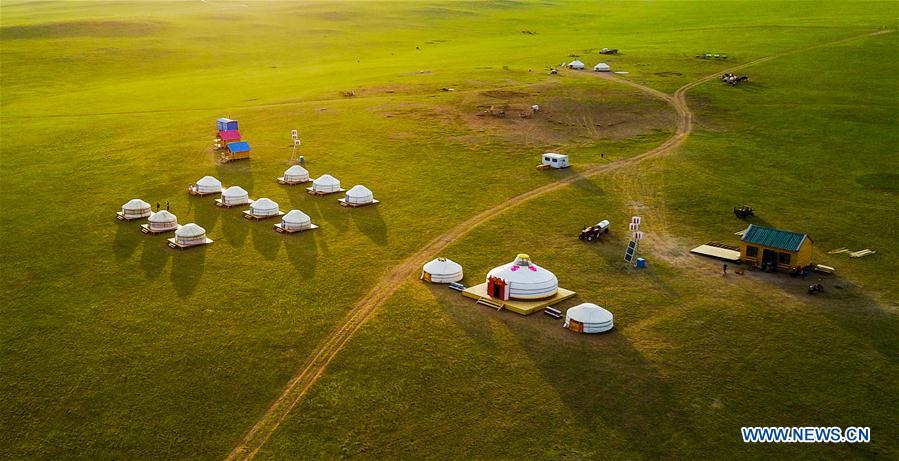
Photo taken on July 17, 2017 shows Mongolian yurts in Hulun Buir grassland, in north China's Inner Mongolia Autonomous Region. [Photo/Xinhua]
Desert Control
Desertification is a severe challenge facing the global community. Preventing and controlling desertification is a great cause that benefits both the current and future generations.
Effort on Kubuqi Desert in northern China's Inner Mongolia Autonomous Region is a good example of China's success in containing desertification.
Kubuqi is the seventh largest desert in China, covering a total area of 18,600 square kilometers. Beijing, only 800 km from the desert, was often troubled by sand storms in the past.
Over the past three decades, farmers and herdsmen in Kubuqi plant liquorice to improve soil and build photovoltaic power stations for electricity. They lifted themselves out of poverty while fighting desertification.
Up till now, Chinese people have forested more than 6,000 square kilometers of Kubuqi and reduced 90 percent of sand storms in the desert.
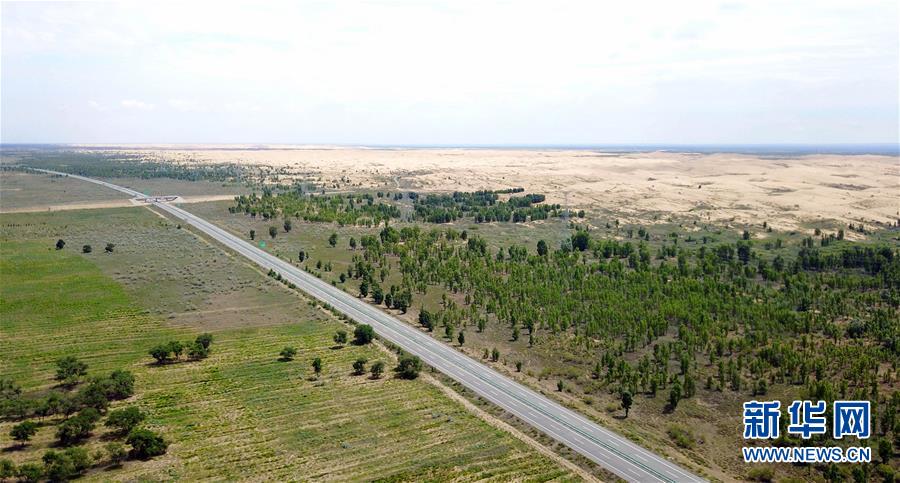
Photo shows expressway runs through the ecological forest belt at the edge of the Kubuqi Desert in Ordos, north China's Inner Mongolia Autonomous Region, July 28, 2017. [Photo/Xinhua]
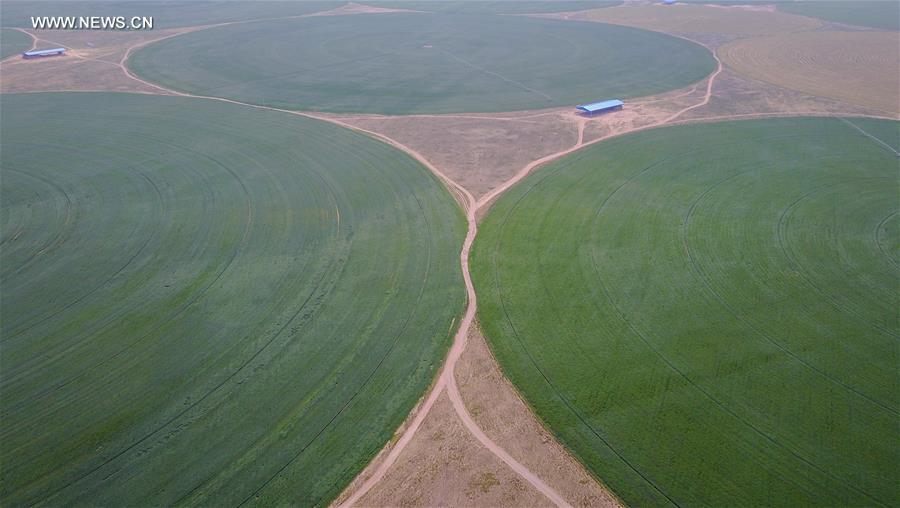
Aerial photo taken on June 15, 2017 shows pasture of alfalfa in Ar Horqin Banner of Chifeng City, north China's Inner Mongolia Autonomous Region. Local authorities brought in investment to develop its pasture industry, which also helped to prevent the land from being desertified. [Photo/Xinhua]
Mongolian Horse Protection
Horses are important in Mongolian culture, which has more than 300 words for horses and a further 200 just for their color.
To preserve the endangered Mongolian horse and inherit the horse culture, protection efforts were made. In 2011, the region set up three breeding bases for Mongolian horses with a total investment of 18 million yuan per year to preserve Mongolian horses. Such protection efforts have seen the number of horses in Inner Mongolia increase 25 percent in a decade, reaching 880,000 last year. Horse-related events are also increasing in the region.
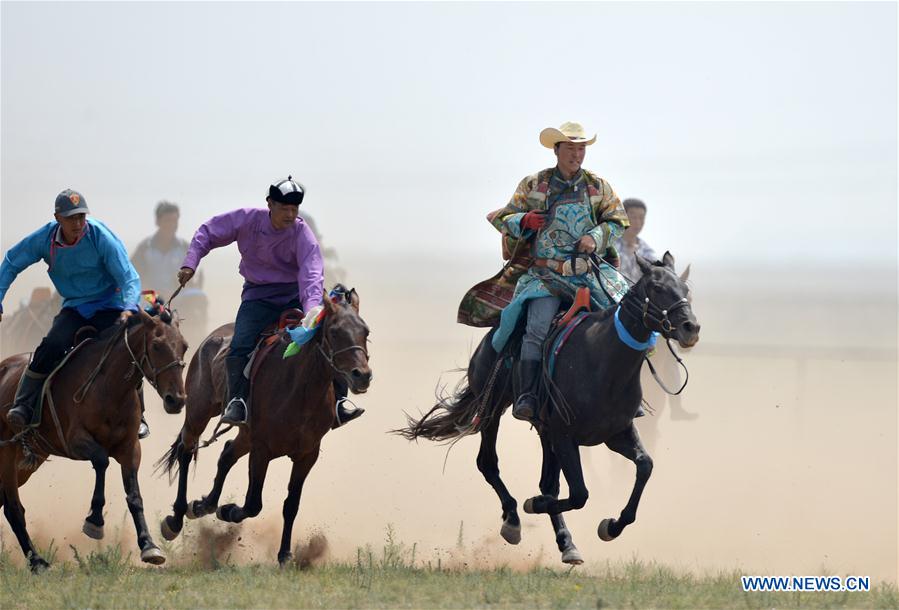
Herdsmen take part in a horse racing on the prairie at Xilinhot, north China's Inner Mongolia Autonomous Region, July 2, 2017. [Photo/Xinhua]
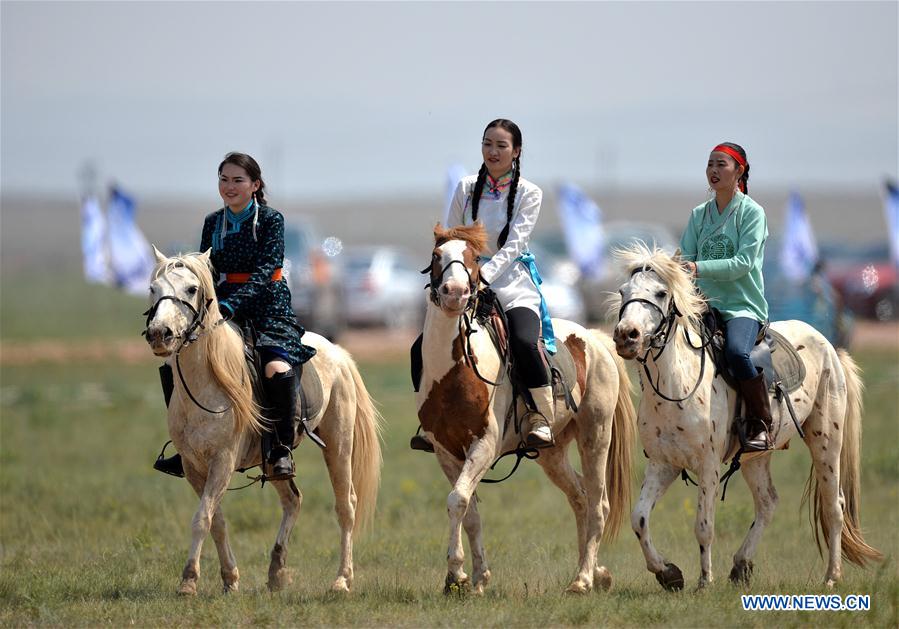
Girls ride horses on the prairie at Xilinhot, north China's Inner Mongolia Autonomous Region, July 2, 2017. [Photo/Xinhua]
Grassland Protection
From 2011 to 2016, a total of 30 billion yuan (4.47 billion U.S. dollars) had been invested to protect the ecosystem of grassland in the region.
Various measures, such as reforestation and restricting grazing areas, are taken to stop the land degradation.
In Xilingol, where the area of grassland accounts for a quarter of the total in the region, the government has subsidized herders who raise livestock in sustainable fashion in an effort to prevent overgrazing.
To date, the Inner Mongolia Autonomous Region has 182 nature reserves and 43 national forest parks.
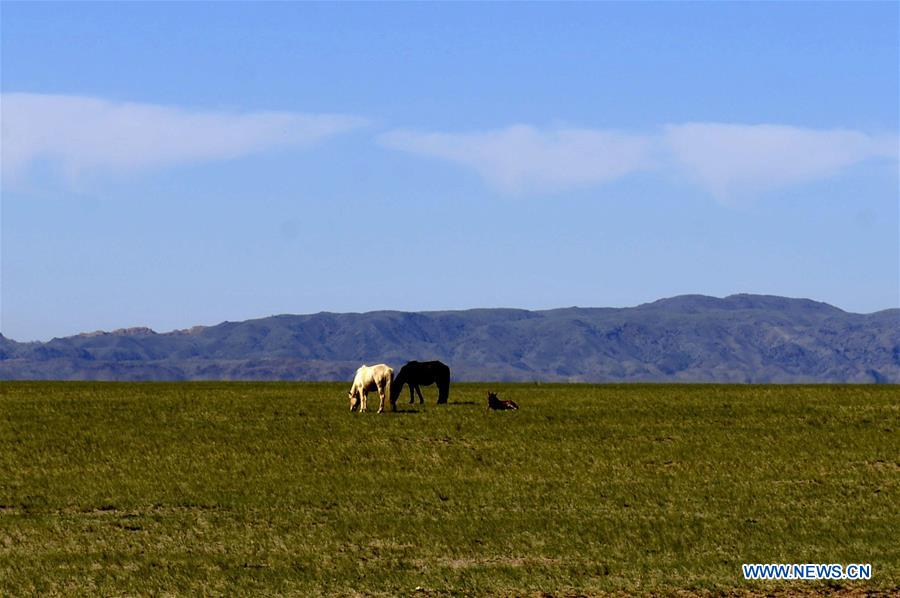
Horses graze on the grassland in Urat Middle Banner of Bayan Nur City, north China's Inner Mongolia Autonomous Region, May 14, 2017. [Photo/Xinhua]
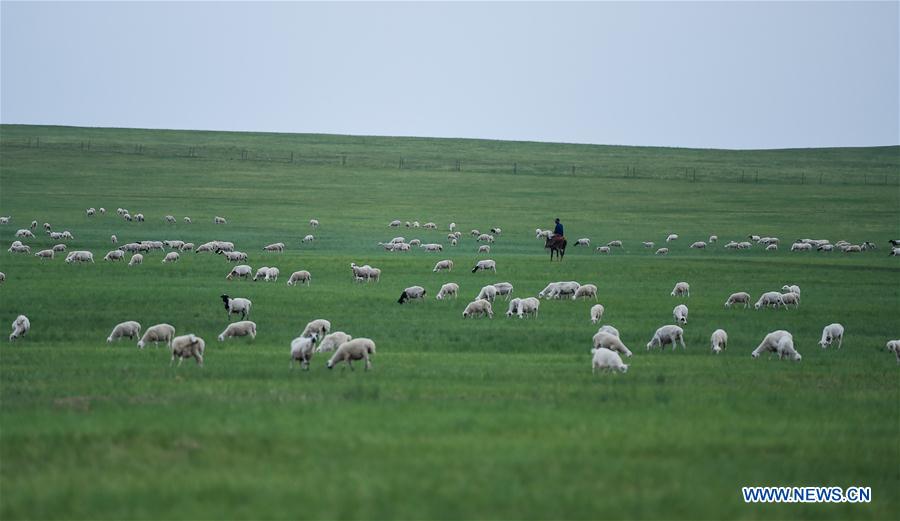
A herdsman pastures sheep on grassland in Xin Barag Youqi, north China's Inner Mongolia Autonomous Region, July 17, 2017. [Photo/Xinhua]
Great Wall Protection
Inner Mongolia boasts a 7,570-km stretch, or 35 percent, of the Great Wall.
To strengthen protection, the regional government has approved the establishment of a Great Wall protection center, which is affiliated with the regional culture department.
Protective nets and fences will be set up along sections of the Great Wall near villages and damaged parts will be restored in the next three years.
Protection stations are scheduled to be built in some cities and training will be organized as well.
The region will also cooperate with neighboring provinces to protect and launch joint patrols along the Great Wall.
Clean Energy -- Wind Power
As one of the largest wind farms in Asia, Huitengxile wind power plant not only alleviates the shortage of electricity in Beijing and Tianjin, but also forms a unique landscape of wind farm.
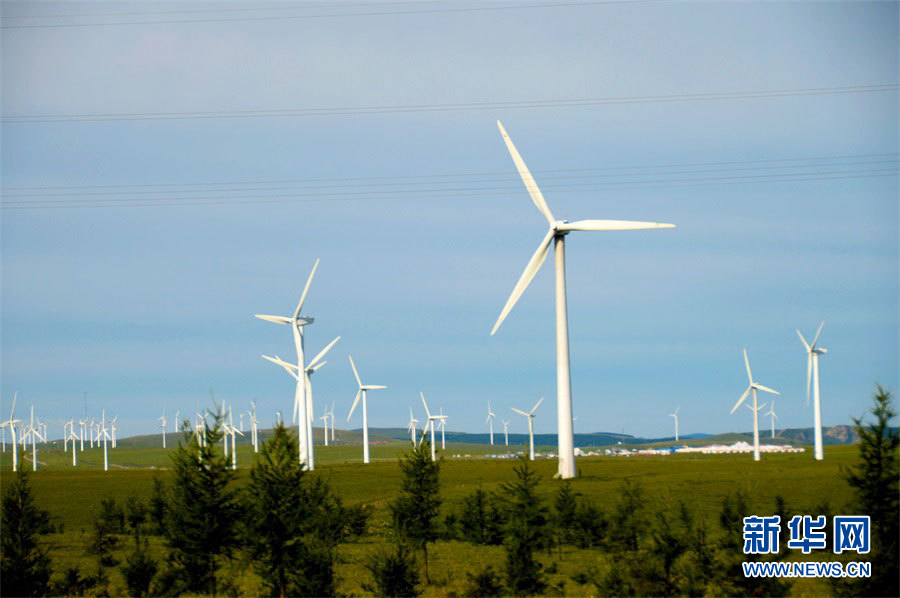
Photo taken on September 1, 2016 shows Huitengxile wind farm, north China's Inner Mongolia Autonomous Region. [Photo/Xinhua]
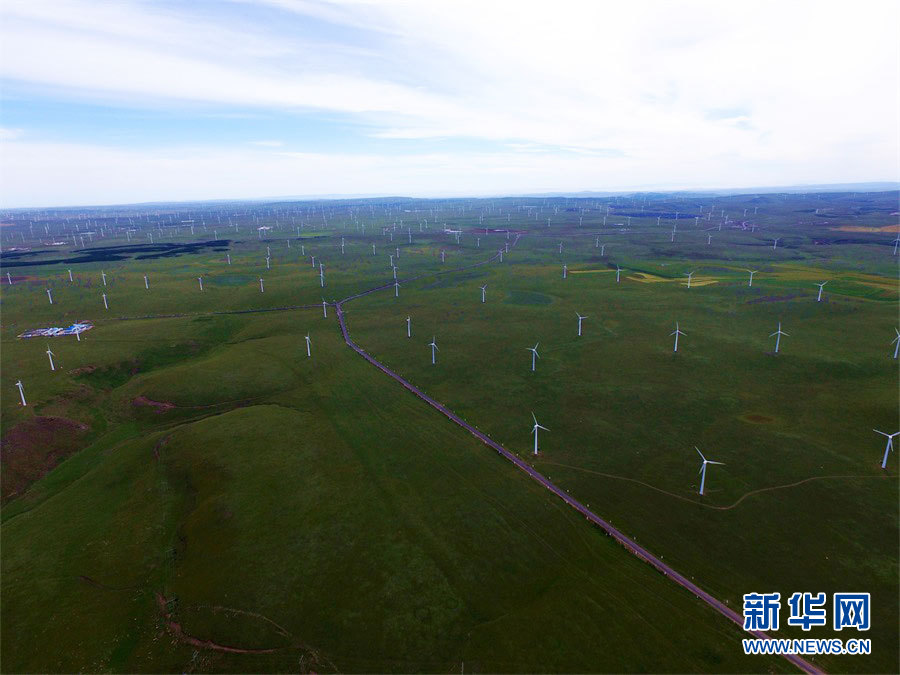
Aerial photo taken on September 1, 2016 shows Huitengxile wind farm, north China's Inner Mongolia Autonomous Region. [Photo/Xinhua]
Your Comment
Name E-mailRelated News
-
;
Based in Lhasa, Tibet Vista is a Tibet travel agency that specialized in Tibet permit, and Tibet tours for both private and group travelers at a local price!
•4 Days Lhasa City Group Tour from USD 460 •8 Days Everest Base Camp Group Tour from USD 850 •15 Days Mt.Kailash Group Tour from USD 1780 •2016 Tibet Train Tours from Beijing, Shanghai, Chengdu, Xining,etc




